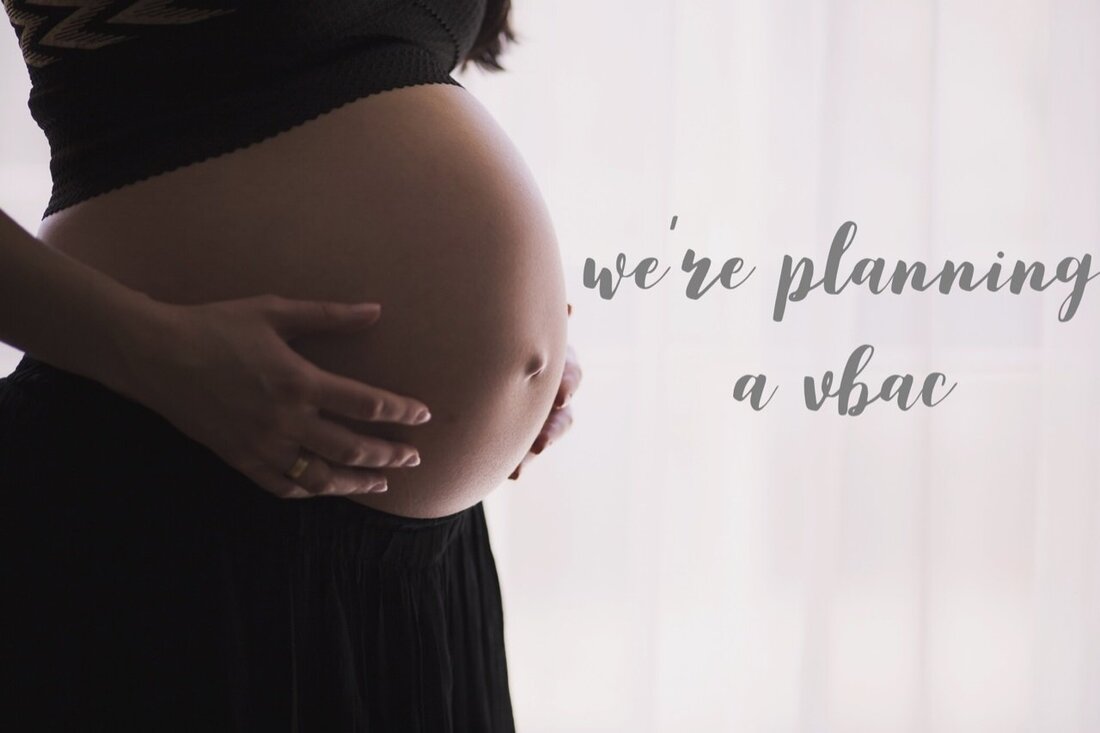|
It really is up to each mother, and the circumstances surrounding her pregnancy, as to which way she may want to give birth. There are two options for giving birth: a vaginal birth after Caesarean section (VBAC) or an elective repeat Caesarean section. Most women can have successful VBACs without any complications. However, one of the risks that you will hear a lot about is uterine rupture. This is when the scar along the uterus from a previous C-Section opens during a vaginal delivery. It is very rare and affects less than 1 percent of pregnant women, but it is important that you know this risk. Your caregivers will know that you previously gave birth via C-Section and will watch out for any signs of uterine rupture during your labour. During your labour you will be checked more closely and more often when you have opted for a VBAC. During your labour you'll be offered continuous electronic fetal monitoring. This will measure your baby's heart rate and your contractions. Your baby's heart rate can give caregivers an early sign that your uterine may have ruptured. Should this happen they will act quickly and offer you alternative care for your labour.
Because it is a riskier procedure, your doctor may recommend that you give birth in a labour unit. This may sound alarming, but they are mitigating the possibility of things taking a turn and there being a delay in your care. Of course, ultimately it is your decision where you prefer to give birth. It is important for you to know that if you go into labour prematurely (before 37 weeks), VBAC is still an option. Can I have pain relief during a VBAC? Yes. You should be able to have the same pain relief options during your VBAC that you would have been offered during a vaginal birth. However, be aware that if you had an epidural, this form of pain relief would block out the abdominal pains in between contractions or sudden feelings of tenderness of your scar. Being numbed means that you may not be aware that you have symptoms of a uterine rupture. You should be able to use a birth pool for relaxation – your caregivers can let you know if this is not possible in your case. Many units have waterproof continuous monitoring systems (telemetry), to make it possible to monitor your baby whilst you are in the pool. What’s the alternative to a VBAC? If you’re unsure whether you want to have a VBAC, you could opt for planned repeat caesarean. This is usually booked close to your due date, unless your doctor can clinically justify your baby being born sooner. If you have experienced any of the following, it may be advisable not to go through with a VBAC
It is recommended to speak to your caregivers and ask them specifically about you and your baby. If they present evidence, does that tie in with your medical situation? Don’t be afraid to ask questions. If both VBAC or planned C-Sections are options available to you, you'll have plenty of time to consider the risks and benefits of each. Talk to your obstetrician about your previous birth(s). Find groups to speak with women who have been in your position, such as VBAC Empowerment & Support Group. Get varied opinions and experiences to ensure that you are comfortable with your decision. What are the advantages of a VBAC? A successful VBAC carries the lowest risk of complications. If you have a VBAC, you’ll avoid the risks associated with repeat caesareans and have a quicker recovery time. Looking after your child and your new baby following a vaginal birth will be easier on you. Planned C-Section babies born before 39 weeks are more likely to have trouble breathing after it’s born, compared with a baby born at the same time vaginally. However, if you do have a repeat caesarean before 39 weeks, your doctor is likely to offer you steroids beforehand to help prepare your baby's lungs and reduce their risk of breathing problems. Again it’s up to you to decide if you want to take the steroids. With a successful VBAC, you'll have a shorter stay in hospital and you should experience less pain and discomfort in the weeks and months after the birth. If you‘re planning more pregnancies, then trying for a VBAC may help you to avoid future complications that are more likely after repeat caesareans, including placenta praevia, placenta accreta and hysterectomy. Once you've had one successful VBAC, you're more likely to have another one in the future. Are there disadvantages to having a VBAC? There a no disadvantages to a VBAC, in as much as, there are things that can happen to a woman who gives birth vaginally. These can include:
Pregnancy itself can weaken your pelvic floor, so having a C-Section doesn’t mean that you won’t have pelvic floor issues in later life. It's important to do pelvic floor exercises, whichever way you give birth. How do I decide whether to plan for a VBAC? Take time to explore your feelings about the birth. Have you had the chance to talk about your previous birth(s). What is your body instinctively telling you to go for? Never ignore your intuition and gut feeling. Talking it over with your caregivers and your loved ones, may help. You may want to look online for groups that support women planning a VBAC, such as the VBAC Empowerment & Support Group on Facebook. What are my chances of a successful VBAC? If you needed a caesarean to give birth previously because of a uterine abnormality, then you may need to have a repeat caesarean. Each woman needs to be assessed individually. However, if you had a C-section because of something unique to your last pregnancy, such as a breech baby, pre-eclampsia or a low-lying placenta, you stand a good chance of having a successful VBAC. Having a supportive team comprising of both medical caregivers and family members, can hugely impact your chances. VBAC success rates are lower if you:
Can I have a VBAC at home? Yes if you want to. You caregivers will advise you as to why they may not recommend this. Having a VBAC in hospital means that if your scar tears you can be treated straight away. A c-section should be done as soon as possible. If you’re planning to try for a VBAC at home, it may help to find out what the transfer time to hospital would be. If your heart is set on a home birth, it's worth contacting a local supervisor of midwives or midwifery advocate by phoning your maternity unit. A senior midwife can take you through all your options and help you to plan the safest care for you and your baby. Another option is to employ an independent midwife, but you’ll have to pay for her services. Use the Independent Midwives Association’s Find a Midwife service for a list of midwives in your area. Case study, Joanne gave birth in Harold Wood Hospital in Essex We asked a mum of three about her two VBAC experiences. How did you decide to opt for a VBAC? I decided for VBAC because I wanted to experience a natural birth and felt I had missed out! When did you decide this? I had wanted to do a VBAC even before I fell pregnant. How were the antenatal midwives when you said you wanted to do this? The antenatal midwives were very supportive, but they were always reminding me of the risk of my womb rupturing from the previous c section. I was advised that when I went into labour that I was to go to hospital straight away, so they could keep an eye on me because of the risks, especially uterine rupture. How were the labour staff about you wanting to do a VBAC? The midwives did not try and sway me, they were very supportive. Were they spontaneous or induced labours? The first VBAC in 1997 was induced at 41 weeks. I was induced repeatedly with a pessary, then eventually with the Synthetic Oxytocin drip. I was very well-monitored during this labour. This labour lasted around 24 hours. I remember having the first pessary the day before. I was having contractions but then they would stop, that’s why I went on to have the drip. There was so much intervening because of being induced, this made it feel like it went on forever. This birth was extremely painful! I was prescribed pethidine which made me very sick. I ended up having an epidural, then I went off to sleep. The birth when it eventually happened was a very good experience, I had no pain, the pushing was an unusual experience as I couldn’t feel very much, due to the epidural. I gave birth on the bed, in the normal laying on your back position with my husband next to me, he cut the cord. I was advised not to give birth in a pool because it was too risky. I had trouble with the epidural afterwards. I bruised my coccyx bone and I was in terrible pain. The pain lasted for about a week. My second VBAC in 2004 was spontaneous at 37 weeks. My waters broke when I was sleeping in bed, I felt a pop and then, a trickle of water, this was just before 6 in the morning, I remember changing the bed before going off to the hospital. On arrival at the hospital I was monitored but I’m assuming that because this was my second VBAC the midwives felt quite relaxed with me. I spent most of the day walking the grounds of the hospital trying to increase the intensity of my contractions. This really did help and I went on to have him at 1 o’clock in the morning. I was left to fend for myself for this birth. I was assigned to a designated group of midwives, who were attached to my doctor’s surgery. When I went into full labour they were called and came to the hospital to deliver my baby (I’m not sure if they still do it that way anymore). I felt that they thought that because it was third time that I knew what I was doing. The midwives were more concerned for the first-time mothers, which was terribly unfair. When they realised I was dilating rather quickly they panicked, which was very bad because they should have been watching me more closely because of uterine rupture. However, when the midwife did turn up it was a very good experience. The birth was a wonderful experience, maybe because I knew what to expect, I gave birth with just gas and air, which made the whole experience very real! I could feel every pain and movement in my body, an absolutely unforgettable experience. I wasn’t afraid this time, I knew what was about to happen. I thoroughly enjoyed the whole experience. What were the differences between the experiences? The difference about the two experiences were to me, the unknown and then of course the experience of the knowing. What would you recommend to mums to be thinking about opting for a VBAC? I would definitely recommend a VBAC. Having a natural birth is an experience that is magical and it’s so much easier to get over. A C-section is a major operation! If you are planning a VBAC, you can find more information on the AIMS website and their post on VBAC – On whose terms? Follow Magical Baby Moments on its social channels: Facebook | Instagram | Twitter Comments are closed.
|
Categories
All
|
Magical Baby MomentsFrom maternity to motherhood
Hypnobirthing classes in Romford, Essex and surrounding areas Thorntons Farm Ave Romford RM7 0TT 07764 680 215 | [email protected] |


